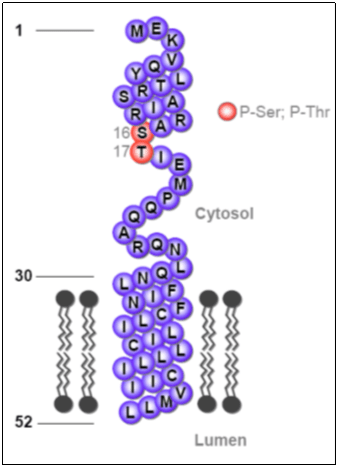
The overall objectives of this project are to provide a clearer understanding of the role of phospholamban (PLN) in the normal working of the heart, and what are the cellular mechanisms in human PLN genetic diseases that result in dilated cardiomyopathy. Further studies of the formation of the PLN–SERCA2a complex might provide further clues as to the mechanisms that underlie PLN regulation and provide new insights into ways to design chemicals that would disrupt this interaction selectively. Our aim is to provide such novel approaches to aid in the diagnosis and treatment of cardiac diseases resulting from defects in the regulation of intracellular calcium concentrations.
Shown, at left, is a schematic diagram of the 52 amino acids that constitute PLN, together with the phosphorylation sites of PLN (Ser-16 and Thr-17)
These experiments have been performed together with several international collaborative initiatives involving Dr. Litsa Kranias (U Cincinnati) , Dr Peter Backx (York U Toronto) and Kinya Otsu (Osaka Japan).